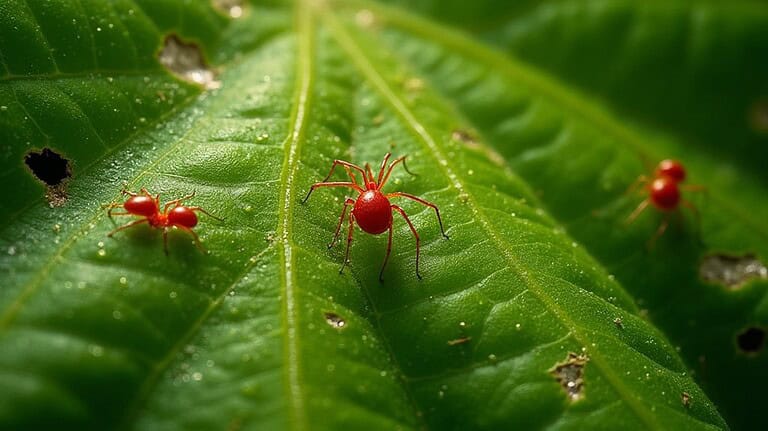Why Are There So Many Centipedes In My House
Are you finding centipedes scurrying around your house and wondering why? Well, it’s not a random invasion. These creatures are attracted to damp and dark spaces, and they actually help control other pests in your home. If you’re constantly seeing centipedes, you likely have multiple pest issues to deal with.
This article aims to help you understand why centipedes are drawn to your home, how you can deter them, and when it might be necessary to seek professional help. Let’s reclaim your home from these unwelcome guests.

Understanding the House Centipede: Scutigera Coleoptrata
Let’s take a closer look at the house centipede, scientifically known as Scutigera Coleoptrata. Understanding its life cycle and habits can provide valuable insights into why you may be encountering them frequently in your home.
Additionally, identifying the environments in which these centipedes thrive can help you develop effective strategies for prevention and control. (Learn How To Tell How Long A Mouse Has Been Dead)
What is a House Centipede
You may be curious about what a house centipede is. Well, it’s actually a common type of centipede found in the U.S., scientifically known as Scutigera Coleoptrata.
These creatures are active at night and tend to prefer damp and secluded areas within your home. They’re natural predators, feeding on common household pests. Understanding this particular type of centipede is crucial if you want to effectively control them.
Life Cycle and Habits of the House Centipede (Scutigera Coleoptrata)
Understanding the life cycle and habits of the house centipede (Scutigera coleoptrata) is essential for effectively managing its presence in your home. This common household visitor is a nocturnal creature that thrives where its prey resides. By gaining knowledge about where house centipedes come from and their life cycle from larva to adult, you can better control their population in your living space.
Where Do House Centipedes Live
Understanding why you’re encountering numerous house centipedes in your home requires knowledge of their typical habitats. House centipedes, specifically Scutigera Coleoptrata, prefer cool and damp environments, making basements a prime location for them.
As these centipedes explore your house, their population can multiply, transforming them into significant pests within your home.

Signs of a Centipede Infestation in Your Home
If you’re noticing an increase in the number of centipedes in your home, it could be a sign of an infestation. Some initial indicators to watch out for include a higher presence of house centipedes and possible signs of their activities indoors.
Understanding the impact of such an infestation is essential in order to take appropriate action.
Appearance of House Centipedes
Why are you noticing an increase in the number of house centipedes in your home? House centipedes are common pests that thrive in environments where their prey is abundant. The presence of house centipedes, with their long legs and odd number of pairs of legs, indicates an infestation.
These centipedes don’t simply appear; they’re attracted to other pests that serve as their food source. If you come across a centipede, it’s important to take immediate action to control these pests. (Read Lots Of Small Holes In Lawn)
Evidence of Centipedes Indoors
Signs of Centipedes in Your Home
- Over time, you may begin to notice certain indications that suggest the presence of centipedes in your living space.
- Identifying evidence of centipedes indoors is the crucial first step towards eliminating these pests.
- These creepy crawlies can enter your home through cracks and crevices.
- If you happen to observe an infestation of insects, it’s important to take action in order to prevent centipedes from infiltrating your home.
- Consider engaging the services of a professional pest control company to address the issue effectively.
The Impact of a Centipede Infestation
When dealing with signs of centipedes in your home, it’s important to understand the impact of an infestation. While centipedes themselves aren’t a direct threat to humans, their presence suggests that your home provides a suitable environment for pests.
Centipedes lay their eggs in damp areas and seek out food, indicating that your home may have other pest problems. This can be a cause of concern for any homeowner, as it affects their peace of mind and the overall condition of their living space.
Why Centipedes Invade Your Home
Have you ever wondered why centipedes invade your home? Well, it’s actually quite simple. These creepy crawlers are attracted to certain conditions that can be found in houses. Factors like dampness, darkness, and an abundance of food sources, such as spiders and insects, make your home a haven for centipedes.
In this article, we’ll explore the causes of a centipede infestation, the common household conditions that attract them, and the food sources that they thrive on. Understanding these factors can help you take the necessary steps to prevent centipedes from invading your living space.
Causes of a House Centipede Infestation
Causes of a House Centipede Infestation
- During the colder months, it’s common for house centipedes to enter your home in search of warmth and food.
- These nocturnal creatures often find their way through small openings around doors and windows.
- The main reason for a house centipede infestation are damp environments that they thrive in.
- To prevent them from entering your home, it’s important to keep your living space dry by using a dehumidifier if necessary.
- Additionally, make sure to seal any potential entry points to keep these pests out.
Common Household Conditions that Attract Centipedes
Conditions in your home can unintentionally attract centipedes. These small bugs, measuring around one to two inches in length with four pairs of legs, are drawn to damp areas, particularly near sources like drains. They can enter your home through open windows and doors, especially if you’re dealing with other pests like cockroaches.
If you’re looking to eliminate centipedes, it’s worth noting that they usually stay away from humans. (Learn How Often To Water Marigold)
Food Sources that Attract House Centipedes
While your home may not be the most appealing place for these creepy crawlers, the presence of certain food sources can turn it into a haven for house centipedes. These multi-legged creatures are attracted to your home because it provides them with an abundant food supply.
They feast on common household pests such as spiders, cockroaches, silverfish, termites, and millipedes, which can often be found hiding in your bathroom or closet.
Are House Centipedes Dangerous
You may be wondering if house centipedes pose a danger to humans. While their appearance can be unsettling, it’s important to note that house centipedes do have the ability to bite. However, their venom is generally not harmful to humans. It’s still crucial to handle these creatures with care to prevent any potential harm.
Can House Centipedes Bite
So, do house centipedes have the ability to bite, and should you be concerned about their bite? The answer is yes, they can bite, but it’s actually quite rare.
House centipedes are equipped with venom to paralyze their prey, not to harm humans. In reality, they pose little to no threat to humans. In the event of a bite, you may experience mild irritation or temporary discomfort, but there are typically no serious consequences.
It’s worth noting that the presence of house centipedes in your home may indicate decay, as they’re attracted to damp and decaying environments.
Are House Centipedes Dangerous to Humans
House centipedes may look creepy, but they’re generally not dangerous to humans or your family. While they do have venomous bites, most species are unable to pierce human skin. Even if they could, the reactions are usually minor.
In fact, these centipedes can actually be beneficial because they prey on pests such as cockroaches and spiders. However, if you notice an abundance of centipedes in your home, it may be a sign of a larger pest problem that you shouldn’t ignore.

How to Get Rid of House Centipedes
When it comes to dealing with house centipedes, it’s important to know how to get rid of them effectively. There are several methods you can try, including natural repellants, pesticides, and professional pest control services.
Additionally, taking preventive measures can help ensure that these unwelcome critters don’t make a return to your home. Let’s explore some practical strategies to eliminate house centipedes and keep your living space pest-free. (Read Connect Two Hoses Together)
Natural Repellants and Pesticides
If you’re dealing with centipedes in your home, don’t worry. Several natural repellants and pesticides can help you eliminate them.
Peppermint oil, cayenne pepper, and diatomaceous earth are effective deterrents that are safe to use. For a stronger approach, you can try borate-based pesticides.
Professional Pest Control Services
Hiring professional pest control services is often the most effective way to permanently eliminate house centipedes. These experts have the knowledge, tools, and specialized techniques to not only get rid of the centipedes but also prevent future infestations.
They’ll identify the areas where centipedes are likely to thrive, apply appropriate treatments, and offer guidance on preventive measures. This comprehensive solution provides peace of mind, knowing that capable professionals are handling your centipede problem.
Preventive Measures to Keep Centipedes Away from Your Home
Taking preventive measures to keep centipedes away from your home is essential. According to pest control professionals, there are proactive steps you can take. Start by sealing cracks and gaps in the structure of your home. This will help prevent centipedes from finding their way inside.
Additionally, it’s important to maintain a dry environment since centipedes are attracted to moisture. Keep your property clutter-free to eliminate potential hiding spots for centipedes. Regular pest inspections can also be beneficial in identifying and addressing any issues.





